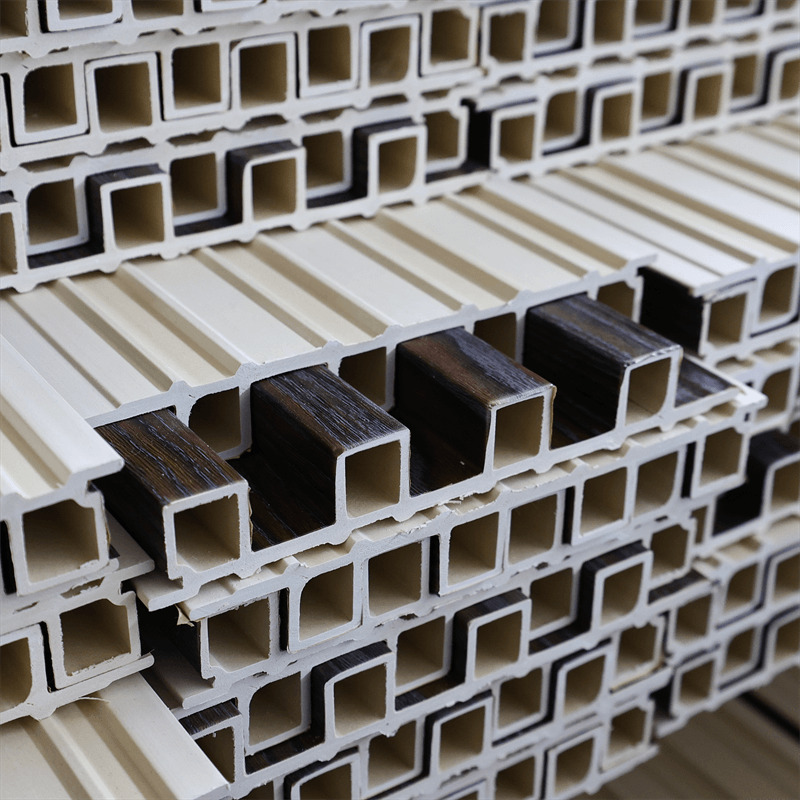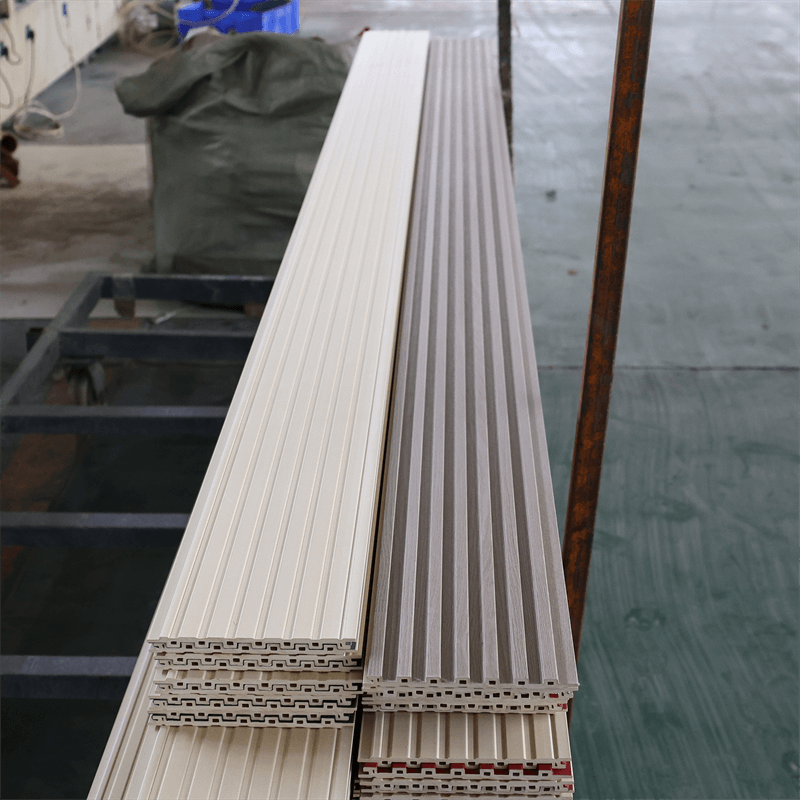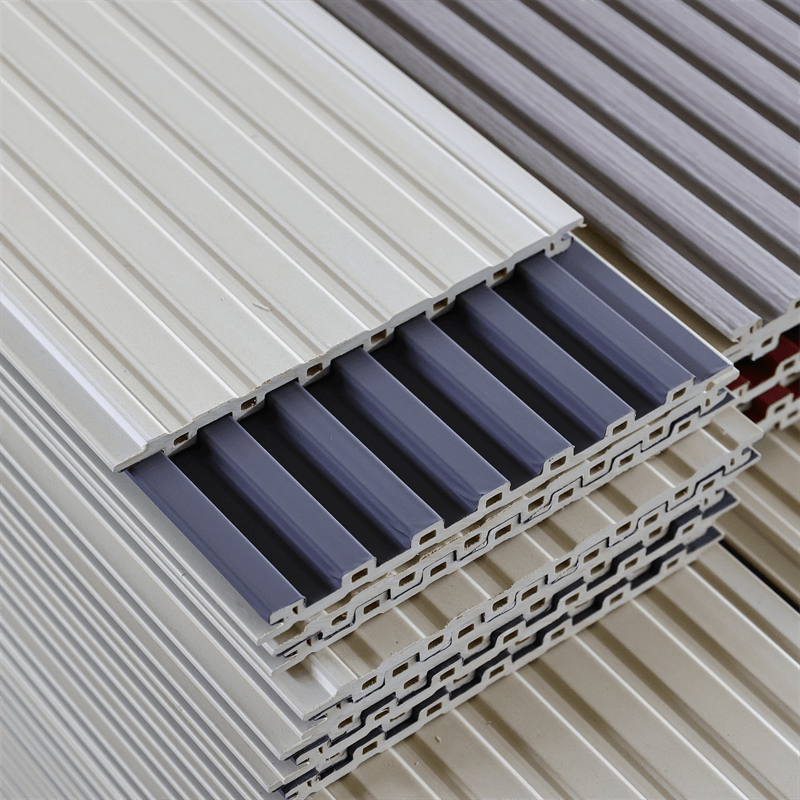Modern interior design is constantly evolving, embracing new materials and technologies to create innovative and aesthetically pleasing spaces.
One such material that has gained significant popularity in recent years is WPC (Wood-Plastic Composite) wall panels.
WPC wall panels offer a unique combination of durability, sustainability, and design versatility, making them an ideal choice for contemporary interior design projects.
This essay explores the rise of WPC wall panels in modern interior design, discussing their benefits, applications, and impact on the industry.

I. Understanding WPC Wall Panels:
WPC wall panels are made from a combination of wood fibers and thermoplastics, typically polyethylene or polyvinyl chloride (PVC).
This composite material offers a host of advantages over traditional wall coverings.
Firstly, it possesses the natural beauty and texture of wood, providing a warm and inviting ambiance to any space.
Additionally, the inclusion of thermoplastics enhances the panels’ durability, making them resistant to moisture, rot, and termites.
This inherent strength allows for a longer lifespan compared to conventional materials like wood or gypsum board.
II. Benefits of WPC Wall Panels:
- Sustainability: In an era of growing environmental awareness, WPC wall panels stand out as an eco-friendly choice. The utilization of wood fibers from sustainable sources reduces the dependence on virgin timber, thereby preserving forests. Furthermore, the incorporation of recycled plastics helps divert plastic waste from landfills, contributing to a more sustainable waste management system.
- Durability: WPC wall panels exhibit exceptional durability, making them ideal for high-traffic areas or spaces prone to impact and abrasion. Unlike traditional wall materials, WPC panels are resistant to scratches, dents, and fading, ensuring their long-lasting beauty even in demanding environments.
- Moisture Resistance: One of the significant advantages of WPC wall panels is their resistance to moisture. Unlike natural wood, which is prone to warping and swelling when exposed to moisture, WPC panels remain stable and unaffected. This characteristic makes them suitable for installation in bathrooms, kitchens, and other areas where moisture is prevalent.
- Low Maintenance: WPC wall panels are incredibly low maintenance, requiring minimal upkeep compared to materials like paint or wallpaper. They are easy to clean, often requiring only a gentle wipe with a damp cloth. This feature not only saves time and effort but also contributes to the panels’ longevity.
III. Applications of WPC Wall Panels:
- Residential Spaces: WPC wall panels have found widespread application in residential interiors. They can be used to create accent walls, adding visual interest and texture to living rooms, bedrooms, or dining areas. The wide range of finishes and colors available allows homeowners to achieve their desired aesthetic, whether it be a rustic, contemporary, or minimalist style.
- Commercial Spaces: The versatility and durability of WPC wall panels have made them a popular choice for commercial interior design projects. They are commonly used in hotels, restaurants, retail stores, and offices to create welcoming and visually appealing environments. Furthermore, the panels’ resistance to wear and tear makes them suitable for high-traffic areas, ensuring their longevity in bustling commercial spaces.
- Educational Institutions: WPC wall panels have also found their way into educational institutions, where they offer both aesthetic and functional benefits. These panels can enhance the acoustic comfort in classrooms and lecture halls, minimizing noise distractions and improving the learning environment. Additionally, their durability and ease of maintenance make them a practical choice for schools and universities.
- Exterior Applications: While primarily used for interior design, WPC wall panels are also suitable for exterior applications. Their resistance to moisture, UV rays, and temperature variations allows them to withstand harsh outdoor conditions. Thus, they can be used to clad the facades of buildings, creating a cohesive and visually appealing exterior design.
IV. Impact on Modern Interior Design:
The rise of WPC wall panels has had a profound impact on modern interior design.
Their versatility and design flexibility have expanded the possibilities for creating unique and personalized spaces.
Designers and architects now have a wider range of materials to choose from, allowing them to push the boundaries of creativity and aesthetics.
Moreover, the sustainability aspect of WPC wall panels aligns with the growing demand for eco-conscious design solutions, making them a preferred choice among environmentally aware clients.
WPC wall panels have emerged as a game-changer in modern interior design, offering a range of benefits that traditional materials cannot match.
Their sustainability, durability, moisture resistance, and low maintenance requirements make them an attractive option for residential and commercial spaces alike.
Furthermore, their applications extend beyond interiors, enabling designers to seamlessly integrate indoor and outdoor design elements.
As the demand for sustainable and visually striking design solutions continues to grow, it is evident that WPC wall panels will play a significant role in shaping the future of interior design.
In conclusion, the rise of WPC wall panels in modern interior design has brought about a paradigm shift in the way spaces are designed and decorated.
These panels offer a compelling combination of aesthetic appeal, durability, and sustainability, making them a preferred choice for designers, architects, and homeowners alike.
The benefits of WPC wall panels, such as their sustainability, durability, moisture resistance, and low maintenance requirements, have revolutionized the interior design industry.
They have expanded the possibilities for creating visually striking spaces that not only exude elegance but also contribute to a greener environment.
The incorporation of recycled materials and the reduction in the use of virgin timber showcase a commitment to sustainable practices, aligning with the global movement towards eco-conscious design solutions.

Furthermore, the versatility of WPC wall panels has enabled designers to explore innovative design concepts and push the boundaries of creativity.
The wide range of finishes, colors, and textures available allows for endless customization options, enabling designers to cater to the unique preferences and style of each client.
Whether it is creating accent walls, enhancing acoustic comfort, or cladding building exteriors, WPC wall panels have proven to be a versatile and adaptable material.
The impact of WPC wall panels extends beyond their functional and aesthetic advantages.
Their integration into modern interior design projects reflects a shift towards a more sustainable and mindful approach to creating spaces.
By choosing WPC panels, designers and homeowners are making a conscious decision to reduce environmental impact while enjoying the benefits of a durable and visually appealing material.
As the demand for sustainable design solutions continues to grow, it is evident that WPC wall panels will continue to play a significant role in shaping the future of interior design.
Their ability to combine natural aesthetics with modern technology, durability, and environmental consciousness positions them as a key player in the ever-evolving world of design.
In conclusion, the rise of WPC wall panels has marked a new era in interior design, offering a harmonious blend of style, sustainability, and functionality.
With their numerous benefits and applications, these panels have become a staple choice for creating modern, eco-friendly, and visually captivating spaces.
As we move towards a more sustainable future, WPC wall panels stand as a testament to the power of innovation and responsible design practices.

